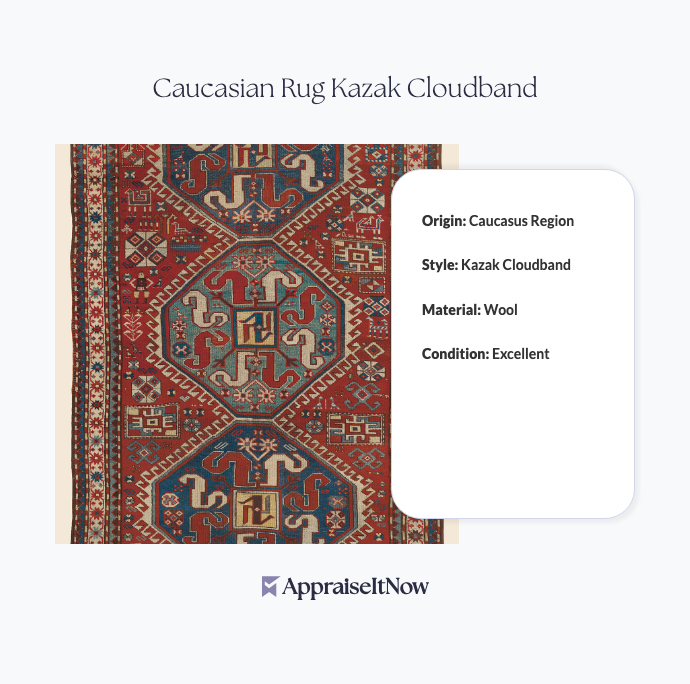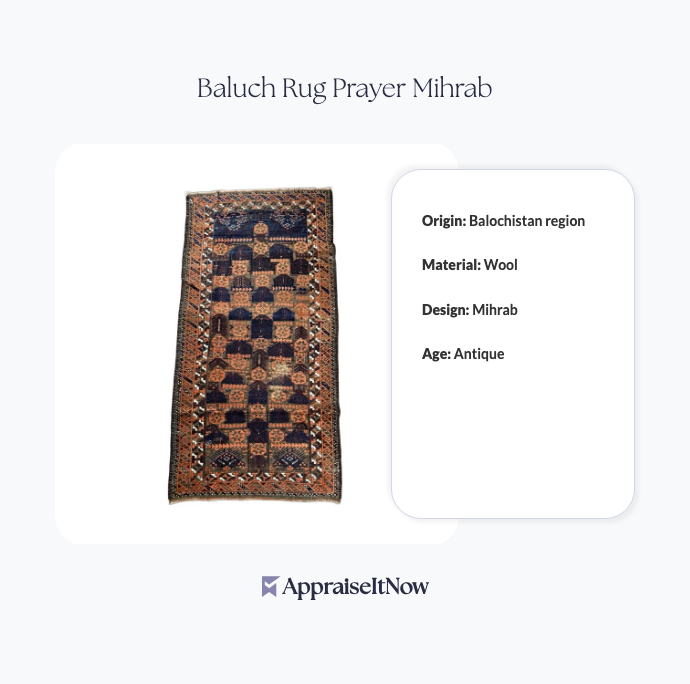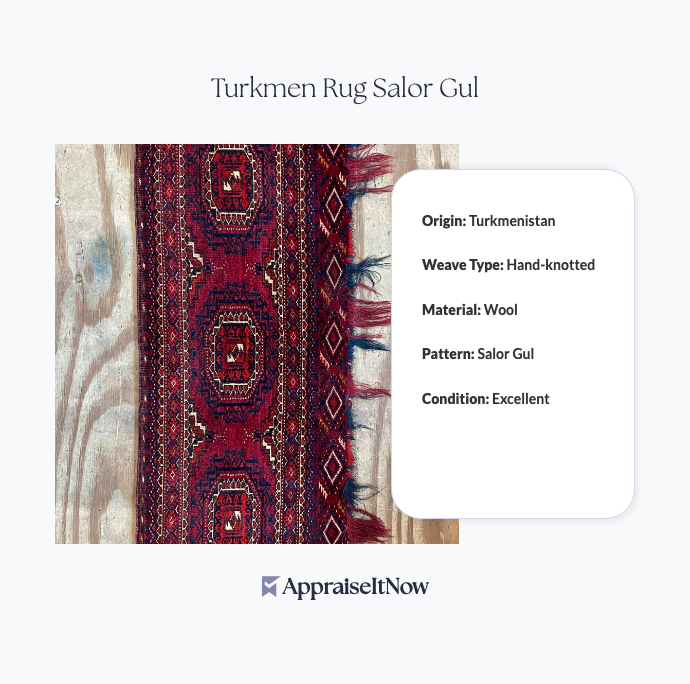<h1>How to Get Your Tabriz Mahi 50 Raj Persian Rug Appraised</h1>
<p>If you own a Tabriz Mahi 50 Raj Persian rug or are considering purchasing one, understanding its true market value is essential for informed decision-making. These exceptional floor coverings command prices between <strong>$15,000 and $20,000</strong> in today's market, but obtaining an accurate appraisal requires understanding what collectors and appraisers evaluate.</p>
<h2>Understanding the Tabriz Mahi 50 Raj Persian Rug</h2>
<p>The Tabriz Mahi 50 Raj represents the pinnacle of Persian rug craftsmanship, originating from the historic city of Tabriz in northwestern Iran. Your rug exemplifies centuries of textile artistry refined through meticulous attention to detail and technical mastery. The distinctive "Mahi" or "fish" design motif—surrounded by intricate floral and geometric patterns—not only enhances visual appeal but carries symbolic meaning rooted in Persian cultural traditions.</p>
<p>The "50 Raj" designation refers to the rug's knot count of 50 knots per square inch, indicating extraordinary craftsmanship. This high density of knotting requires over one year to complete a single rug, reflecting the labor-intensive process that distinguishes fine Persian pieces from mass-produced alternatives.</p>
<div class="callout tip"><p><strong>Quality Indicator</strong></p>
<p>A Tabriz rug with a 50 Raj knot count represents the upper tier of Persian rug quality. This density directly impacts durability, visual detail, and collector value.</p></div>
<h2>What Makes Tabriz Rugs Valuable</h2>
<p>When evaluating how to identify a Tabriz rug, appraisers examine several defining characteristics that distinguish these pieces in the market. The central medallion motif surrounded by complex border designs creates visual balance and sophisticated composition that collectors recognize immediately. Your Tabriz's value stems from the convergence of superior materials, ancestral techniques, and cultural significance.</p>
<p>The use of all-natural vegetable dyes—a hallmark of authentic Persian craftsmanship introduced in the 16th century—ensures color longevity and environmental sustainability that synthetic alternatives cannot replicate. Combined with high-quality wool and traditional loom construction, these elements create rugs recognized as masterpieces by collectors worldwide. When considering whether Tabriz rugs are good quality, the evidence speaks clearly: these pieces consistently appreciate and maintain value over decades, making them both aesthetic investments and practical heirlooms.</p>
<p>The meticulous handweaving process on traditional looms creates minor variations that authenticate genuine pieces. Unlike machine-made reproductions, authentic Tabriz rugs display subtle irregularities in pattern repetition and knot placement that skilled appraisers use to verify authenticity.</p>
<h2>Identifying Authenticity and Determining Value</h2>
<p>Understanding how to identify an authentic Persian rug forms the foundation of accurate appraisal. Appraisers examine the rug's underside, searching for consistent knot structure and observing whether the design corresponds properly to the foundation. Authentic Tabriz rugs show symmetrical knots with visible wool fibers, while counterfeits typically display inconsistent patterns or synthetic materials.</p>
<p>The signature or maker's mark—often woven into the rug's border or corner—provides crucial documentation of origin and authenticity. Some Tabriz pieces include dates in Persian numerals, helping appraisers determine age and historical context. However, not all authentic pieces carry signatures, so professional examination of materials, dyes, and construction techniques becomes essential.</p>
<p>How do you know if your Persian rug is valuable? Several factors converge to establish market worth. Beyond the Tabriz origin and Mahi design, appraisers evaluate the rug's size, condition, age, and any notable provenance. A Tabriz Mahi 50 Raj measuring 8×10 feet in excellent condition will command significantly higher values than a smaller or worn example. The color vibrancy and pattern clarity also influence pricing substantially.</p>
<div class="callout note"><p><strong>Authentication Priority</strong></p>
<p>Professional appraisers use magnification, light testing, and material analysis to verify authenticity. This documentation becomes essential when selling or insuring your rug.</p></div>
<h2>The Appraisal Process for Persian Rugs</h2>
<p>When seeking professional valuation for your Tabriz rug, expect a comprehensive examination addressing multiple dimensions. Certified appraisers specializing in <a href="/blog/appraisals-for-fine-carpets-and-rugs-valuing-artistry-beneath-your-feet">fine textiles and carpets</a> assess material composition, dye authenticity, knot count verification, structural integrity, and any signs of restoration or damage.</p>
<p>The appraisal report should document the rug's dimensions, age estimation, origin verification, condition grading, and a detailed description of design elements. High-resolution photographs from multiple angles accompany the written assessment, creating a comprehensive record suitable for insurance, sale, or estate planning purposes. Professional valuations from credentialed experts—particularly those holding credentials like AAA, ISA, or CAGA certifications—provide documentation accepted by insurance companies and financial institutions.</p>
<p>How to price Persian rugs requires understanding current market demand, recent comparable sales, and the rug's specific characteristics. Appraisers analyze auction results, dealer pricing, and private sales to establish realistic fair market value. Unlike commodities with standardized pricing, each Tabriz rug is unique, necessitating individualized evaluation. This process mirrors appraisals for other <a href="/types/household-goods">household goods</a> and <a href="/types/personal-property">personal property</a>, though Persian rugs demand specialized expertise.</p>
<h2>Factors That Influence Your Rug's Specific Value</h2>
<p>The <strong>age</strong> of your Tabriz Mahi significantly impacts value, with nineteenth-century examples commanding premium prices. How to tell how old a Persian rug is requires examining materials, dye characteristics, and wear patterns. Antique Tabriz rugs from the 1800s appreciate considerably compared to mid-twentieth-century production, though even modern Tabriz pieces hold their value when crafted with traditional methods.</p>
<p><strong>Condition assessment</strong> directly affects appraisal value. Rugs showing heavy wear, staining, fading, or structural damage receive lower valuations than well-preserved examples. Professional conservation can sometimes enhance value, though poorly executed restoration diminishes worth. Appraisers examine the rug for moth damage, rot, color bleeding, and any evidence of previous repair work.</p>
<p><strong>Size and proportion</strong> influence market value substantially. Standard sizes like 8×10 feet appeal to more collectors than unusual dimensions, supporting stronger demand and pricing. Smaller accent rugs (4×6 feet) command proportionally higher per-square-foot pricing than larger room-sized pieces.</p>
<table class='appraisal-table'>
<thead>
<tr>
<th>Factor</th>
<th>Impact on Value</th>
<th>Details</th>
</tr>
</thead>
<tbody>
<tr>
<td>Age (19th century)</td>
<td>+40-60%</td>
<td>Antique status with historical significance</td>
</tr>
<tr>
<td>Condition (Excellent)</td>
<td>+30-50%</td>
<td>Minimal wear, vibrant colors, no restoration</td>
</tr>
<tr>
<td>Size (8×10 feet)</td>
<td>Baseline</td>
<td>Most marketable dimensions</td>
</tr>
<tr>
<td>Documented provenance</td>
<td>+15-25%</td>
<td>Notable previous owners or exhibition history</td>
</tr>
</tbody>
</table>
<h2>Why Persian Rugs Are Increasing in Value</h2>
<p>The broader market for fine <a href="/blog/appraising-fine-textiles-valuing-antique-fabrics-and-weavings">antique textiles</a> demonstrates consistent appreciation as collectors recognize these pieces as both functional art and alternative investments. Persian rugs, particularly Tabriz examples, are increasing in value due to several converging factors. Decreasing production in traditional weaving regions, growing collector awareness, and institutional recognition of these pieces as significant <a href="/types/artwork">artwork</a> drive demand upward.</p>
<p>Unlike trendy decorative items, authentic Tabriz rugs maintain relevance across design movements. Their timeless aesthetic appeal and cultural significance ensure sustained desirability. Additionally, the environmental and ethical advantages of vegetable-dyed wool in today's sustainability-conscious market position these rugs favorably compared to synthetic alternatives.</p>
<div class="callout tip"><p><strong>Investment Insight</strong></p>
<p>Tabriz Mahi rugs demonstrate stronger long-term appreciation potential than many conventional investments, particularly when proper appraisal documentation supports ownership claims.</p></div>
<h2>When to Seek Professional Appraisal Services</h2>
<p>You should obtain a professional appraisal for your Tabriz rug when acquiring it for purchase, documenting value for insurance purposes, planning estate distribution, or preparing for sale. Whether navigating a significant acquisition or protecting an existing treasure, certified appraisers provide the expertise necessary to establish accurate valuation.</p>
<p><strong>AppraiseItNow</strong> connects you with credentialed specialists in textiles and Persian rugs who deliver USPAP-compliant appraisals. Our network includes experts with years of experience evaluating fine rugs across diverse origins, designs, and historical periods. The appraisal process involves submitting photographs and descriptions through our secure platform, enabling initial assessment before potentially scheduling in-person evaluation if needed.</p>
<p>Understanding the difference between a Persian rug and a Persian carpet clarifies market positioning. While the terms often appear interchangeably, Persian rugs typically refer to smaller, more portable pieces, while carpets indicate larger room-covering textiles. Both categories command significant values when authentically crafted using traditional methods.</p>
<h2>The Market Outlook for Tabriz Rugs</h2>
<p>Are Persian rugs worth the money? This question yields a resounding affirmative for genuine Tabriz pieces, particularly those with documented provenance and excellent condition. The Tabriz rug market demonstrates resilience through economic cycles, suggesting stable long-term value retention. While not every Persian rug appreciates equally—quality, authenticity, and condition determine investment potential—a properly authenticated Tabriz Mahi 50 Raj consistently holds value.</p>
<p>The characteristics of a Tabriz rug—intricate design complexity, superior knot density, traditional construction, and cultural heritage—create enduring appeal across generations. Collectors recognize these pieces as legitimate <a href="/types/memorabilia-and-collectibles">memorabilia and collectibles</a> worthy of investment attention.</p>
<h2>Documentation and Insurance Considerations</h2>
<p>Securing proper appraisal documentation before arranging insurance coverage protects your investment comprehensively. Insurance companies require detailed valuations establishing replacement cost for coverage purposes. A certified appraisal report provides the documentation necessary to establish appropriate coverage limits and justify claims if damage occurs.</p>
<p>Professional appraisals also facilitate estate planning, allowing you to document asset values for distribution purposes or tax preparation. Whether your Tabriz rug represents a treasured family heirloom or recent acquisition, certified valuation creates an authoritative record supporting financial planning and asset management objectives.</p>
<div class="callout note"><p><strong>Key Takeaway</strong></p>
<p>A certified appraisal of your Tabriz Mahi 50 Raj Persian rug establishes accurate valuation, protects your investment through proper insurance documentation, and provides authoritative documentation for sale, estate planning, or collection management. Professional expertise ensures you understand both the historical significance and current market value of this exceptional textile treasure.</p></div>







.avif)







